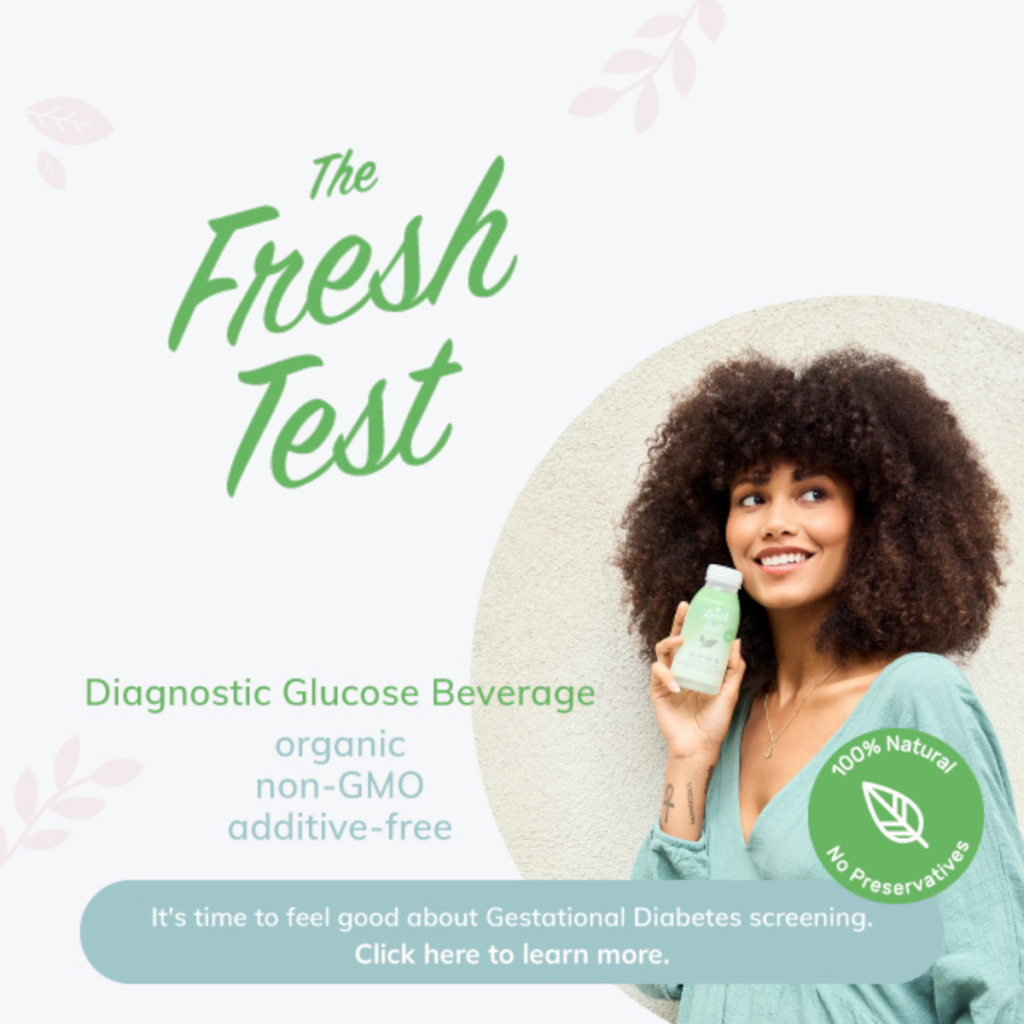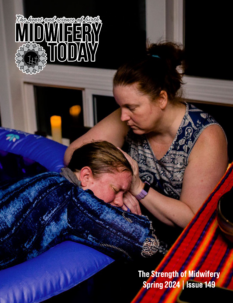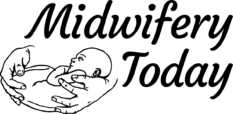
First, Do No Harm
Midwifery Today, Issue 105, Spring 2013.
Join Midwifery Today Join Midwifery Today Online Membership
The most important thing I can say about hemorrhage is, “Don’t cause one.” If the body is well fed and mom is low on stress and feels loved, motherbaby and their process of labor and birth work well. Our first and most important job is to facilitate what is already a beautiful process. God designed this process to work, but birth workers can come along and do interventions that may cause hemorrhage. The baby is born of its mother’s efforts. Don’t tell her when or how to push. Let the fetal ejection reflex take place without interference. Deeply respect the process and the great need of the mother and baby for each other without talk or other disturbances. As Carla Hartley says, “Birth is safe; interference is risky.”
We need to “First, do no harm.” Michel Odent tells us, “Do not disturb the mother.” When we do, we interfere with the natural and strong oxytocin infusion that happens for mother and baby at birth; the peak levels of oxytocin naturally occur if mother and baby are not disturbed by interventions, talking, drugs, etc. When the baby is born, he needs his mother. Do not put a hat on the baby—mom needs to be able to caress, kiss and smell the top her newborn’s head. Even little things we do (like putting on a baby hat) can be too disrupting. The baby belongs skin-to-skin with his mom. She is a perfect heater and can regulate baby’s temperature—she has been doing this for baby’s whole lifetime!
When we were at the Mid-Pacific conference that Michel Odent put on we learned so many more ways we unknowingly disturb the process, as well as the ramifications of these disturbances. The baby gets her first exposure to bacteria at birth—it is so important that her exposure is to mom’s bacteria, not the hospital’s. The possible dangers of not getting inoculated by mom are just beginning to be known.
The subject of noninterference is important, but being ready and knowing what to do is equally important. That is why women need midwives because midwives are trained to help in real, not imagine or caused, emergencies.
My Facebook page has proved an interesting place to learn about midwifery and birth. I asked a question about hemorrhage and Margie Dacko had the most interesting response:
I never used Pitocin in over 2400 homebirths. My hands are my favorite and best tool to stop bleeding (or getting placentas out). BTW, I don’t use eating placenta, herbs or homeopathic bleeding remedies either. They are unnecessary. The uterus wants to stop bleeding, just needs a “helping hand” on occasion.
In my first year of being an independent midwife (1984) I transported two moms with retained placentas and bleeding because that was what I was taught was appropriate—the thought of messing with the uterus with a placenta in it was horrifying. A year or two later a woman with a retained placenta refused to transport to the hospital. I called a friendly CNM who came to the home and removed the placenta. I was stunned at how rough he (yes, a male CNM) was inside her uterus. Here I thought I would poke my finger through a uterus if I touched it, yet he had his whole hand and arm up there! The mother was in pain, but afterward she was thrilled to be able to stay at home. Since then I have never transported a bleeding woman. The knowledge that the uterus wasn’t going to fall apart if I handled it some was very empowering. I have manually assisted in the removal of 3–4 placentas with hemorrhaging, which immediately stopped the moment the placenta exited the uterus. I would say I deal with heavy bleeding with or without a placenta about 1–2% of the time and all have resolved well.
So amazingly, with your well-trained hands, you are equipped with what you need to control hemorrhage almost all the time. Partial placenta accreta might be an example of where you might need to transport. I do think cord, membranes and placenta have an important part to play in hemorrhage control, especially in undernourished populations.
Please keep Midwifery Today alive and growing! If each one of you wonderful, dedicated subscribers gets one other person to subscribe (or if you subscribe for someone), you would have a hand in helping the magazine to thrive. Midwifery Today has always been for the midwives and by the midwives. It is your magazine. You are the biggest and most important part of Midwifery Today, so please continue to support this important resource for birth workers. My magazine mentor and dear friend Peggy O’Mara had to suddenly stop the print version of Mothering magazine, and we all feel the void from the absence of that great resource. We don’t want the same fate to befall Midwifery Today without letting you, our dedicated readers, know that we need your help. We are asking that you get one other person to purchase a subscription. Each one, teach one; each one, reach one. Meanwhile, we have many great writers and excellent themes for the upcoming issues and we plan to continue on this journey toward better birth.
Each one, reach one,
-jan

 Jan Tritten is the founder, editor, and mother of Midwifery Today magazine and conferences. Her love for and study of midwifery sprang from the beautiful homebirth of her second daughter—after a disappointing, medicalized first birth in the hospital. After giving birth at home, she kept studying birth books because, “she thought there was something more here.” She became a homebirth midwife in 1977 and continued helping moms who wanted a better birth experience. Jan started Midwifery Today in 1986 to spread the good word about midwifery care, using her experience to guide editorial and conferences. Her mission is to make loving midwifery care the norm for birthing women and their babies in the United States and around the world. Meet Jan at our
Jan Tritten is the founder, editor, and mother of Midwifery Today magazine and conferences. Her love for and study of midwifery sprang from the beautiful homebirth of her second daughter—after a disappointing, medicalized first birth in the hospital. After giving birth at home, she kept studying birth books because, “she thought there was something more here.” She became a homebirth midwife in 1977 and continued helping moms who wanted a better birth experience. Jan started Midwifery Today in 1986 to spread the good word about midwifery care, using her experience to guide editorial and conferences. Her mission is to make loving midwifery care the norm for birthing women and their babies in the United States and around the world. Meet Jan at our 
















